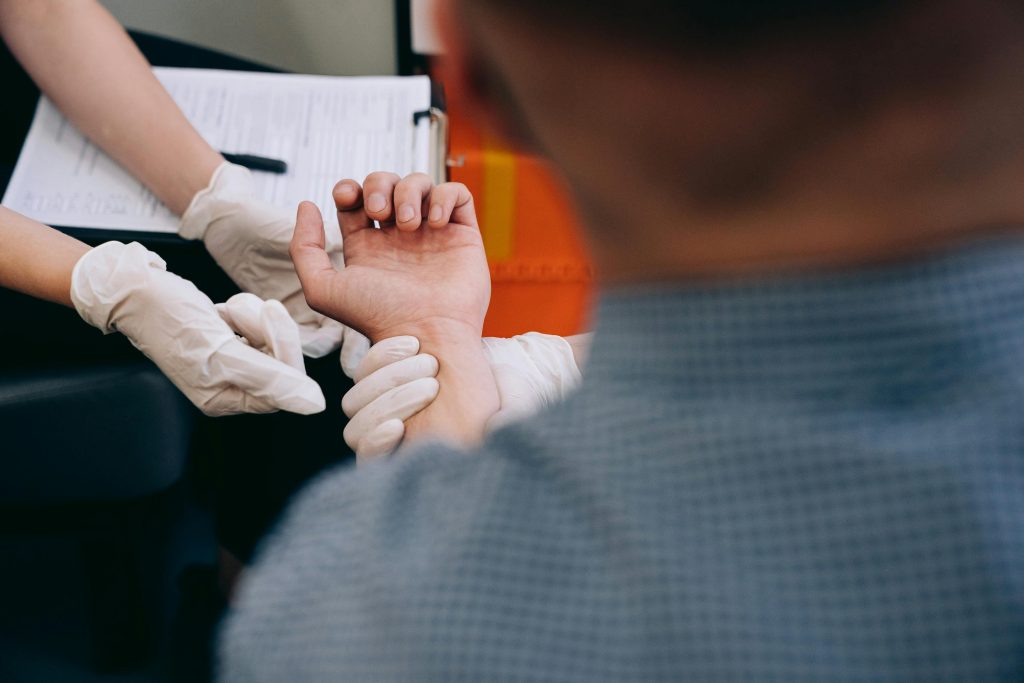Advanced Techniques in Pulse Diagnosis: Linking Subtle Pulse Qualities to Complex Clinical Patterns

By: Alex Qiu
Pulse diagnosis is a cornerstone of Traditional Chinese Medicine (TCM) that demands a high level of expertise to master. Advanced practitioners understand that pulse diagnosis extends beyond identifying the basic categories of pulse qualities, such as slippery, wiry, or thready. It involves a nuanced interpretation of subtle pulse variations that can reveal complex and layered clinical patterns. This blog explores advanced pulse diagnosis techniques, linking subtle pulse qualities to multifaceted syndromes, and providing practical insights for clinical application.
Understanding Pulse Depth and Positioning in Complex Syndromes
In advanced pulse diagnosis, the depth and positioning of the pulse provide critical insights into the pathology’s location and nature. The three positions (cun, guan, and chi) across the radial artery correspond to the organ systems, and their depths (superficial, middle, deep) relate to the qi, blood, and organ layers. For instance, a superficial pulse in the cun position might indicate an exterior condition impacting the Lung, while a deep, thready pulse in the chi position suggests internal cold affecting the Kidneys.
Case Example: Chronic Fatigue Syndrome with Dampness and Spleen Qi Deficiency
A client with chronic fatigue syndrome presents with a superficial yet weak pulse at the cun position and a deep, soggy pulse at the guan position. This combination suggests an external Dampness overlaying an internal Spleen Qi deficiency. The superficial aspect indicates the lingering Dampness in the upper body, while the soggy quality reflects Dampness obstructing the Middle Jiao. Protocol should include points like ST36 (Zusanli) to tonify the Spleen and SP9 (Yinlingquan) to resolve Dampness, along with herbal formulas such as Shen Ling Bai Zhu San to address the underlying deficiency and Dampness.
Subtle Pulse Qualities and Their Clinical Implications
Subtle qualities in pulse diagnosis, such as slipperiness within a wiry pulse or floating within a thready pulse, can often be overlooked but are essential for uncovering complex patterns. These qualities indicate not only the type of pathogenic influence but also the interplay between different pathophysiological mechanisms.
 Complex Cold and Heat Syndromes
Complex Cold and Heat Syndromes
A combination of wiry and slippery pulse qualities often points toward complex conditions involving Liver Qi stagnation with concurrent phlegm accumulation, such as in some presentations of polycystic ovarian syndrome (PCOS). A wiry pulse that feels slippery suggests that while Liver Qi stagnation is primary, Phlegm is concurrently obstructing the Middle Jiao, contributing to the syndrome’s complexity.
Case Example: PCOS with Liver Qi Stagnation and Phlegm Accumulation
In this scenario, the pulse is wiry on the left guan position, indicating Liver Qi stagnation, and slippery on the right guan, pointing to Phlegm in the Middle Jiao. Protocol should focus on smoothing Liver Qi with points like LV3 (Taichong), resolving Phlegm with ST40 (Fenglong), and using herbal formulas such as Xiao Chai Hu Tang combined with Er Chen Tang to address both the stagnation and Phlegm accumulation.
Pulse Qualities Indicative of Blood Stasis and Qi Deficiency
A choppy pulse is often linked with Blood stasis, but its coexistence with a weak, forceless pulse indicates a simultaneous presence of Qi deficiency. This can be seen in complex conditions like chronic pain syndromes or fibromyalgia, where Blood stasis is prominent but over time leads to a depletion of Qi.
Case Example: Fibromyalgia with Blood Stasis and Qi Deficiency
A client presents with a choppy pulse at the cun and guan positions but forceless and thready at the chi position. This pulse suggests that while Blood stasis affects the Heart and Spleen, the Kidney Qi is insufficient, leading to generalized weakness. The combination indicates a long-term stagnation that has gradually depleted the Qi, characteristic of chronic pain conditions like fibromyalgia. The protocol plan should include points like BL17 (Geshu) for Blood stasis, SP6 (Sanyinjiao) for nourishing Blood, and CV6 (Qihai) to tonify Qi. The herbal formula Xue Fu Zhu Yu Tang can be modified with Huang Qi (Astragalus) for Qi tonification.
Floating and Hidden Pulse Qualities: Chronic versus Acute Conditions
The presence of a floating pulse often correlates with acute conditions impacting the exterior, while hidden pulses indicate deep, chronic conditions. When these qualities are subtle yet present in the pulse, it reveals a layered condition where an acute episode overlays a chronic condition.
 Acute Flare of Chronic Conditions
Acute Flare of Chronic Conditions
For example, a client with rheumatoid arthritis might present with a hidden, deep pulse at the chi position (indicating chronic Kidney deficiency) and a slightly floating quality at the guan position, which could suggest an acute inflammatory flare impacting the Spleen. This interpretation guides the practitioner toward a protocol plan that simultaneously addresses the acute inflammation and the chronic deficiency.
Case Example: Rheumatoid Arthritis with Acute and Chronic Elements
In this scenario, KD3 (Taixi) and BL23 (Shenshu) can be used to support Kidney function, while LI11 (Quchi) and ST36 (Zusanli) address the acute inflammatory response. A herbal prescription like Du Huo Ji Sheng Tang can be used with modifications, such as adding Sang Zhi (Mori Ramulus) and Xi Xian Cao (Siegesbeckiae Herba) for acute inflammation.
Utilizing Pulse Quality to Refine Strategy
Advanced practitioners consider how subtle changes in pulse quality during protocol can inform the next steps in client management. For instance, a pulse that transitions from wiry and rapid to more slippery and slower could indicate the effective movement of Qi and resolution of Heat, prompting a shift from dispersive to more harmonizing protocol.
Practical Application: Monitoring Protocol Progress
A client undergoing protocol for sleeplessness related to Liver Heat might initially present with a wiry, rapid pulse at the guan position. Following several sessions using LV2 (Xingjian) to clear Liver Heat and HT7 (Shenmen) to calm the Shen, the pulse may soften and become slower, indicating that the excess Heat has been reduced. This transition allows the practitioner to adjust the protocol, perhaps incorporating more tonifying and harmonizing strategies to support the Heart and Liver balance.
Conclusion: Mastering the Art of Pulse Diagnosis
Advanced pulse diagnosis is an art that extends beyond basic categorizations to include the subtleties of pulse depth, quality, and interposition between organs and pathologies. For practitioners, the ability to discern these nuanced qualities is crucial for crafting sophisticated, individualized plans that address the multifaceted nature of complex syndromes. Integrating these advanced techniques into daily practice not only enhances diagnostic accuracy but also optimizes therapeutic outcomes for clients with intricate and challenging conditions.
References:
- Chen, H., et al. (2018). Clinical Applications of Pulse Diagnosis in Chronic Fatigue Syndrome. Journal of Traditional Chinese Medicine, 39(2), 123-130.
- Huang, X., et al. (2020). Understanding Pulse Dynamics in Rheumatoid Arthritis through Advanced TCM Techniques. Journal of Integrated Medicine, 18(5), 324-333.
- Li, M., et al. (2021). The Role of Pulse Diagnosis in Fibromyalgia Management: Linking Clinical Patterns with Pulse Qualities. Chinese Medicine Journal, 12(4), 210-219.
- Wang, J., et al. (2021). Subtle Pulse Qualities and Complex Syndromes: A Study on PCOS and TCM Diagnostics. Journal of Chinese Medicine, 45(3), 98-107.


 Complex Cold and Heat Syndromes
Complex Cold and Heat Syndromes Acute Flare of Chronic Conditions
Acute Flare of Chronic Conditions